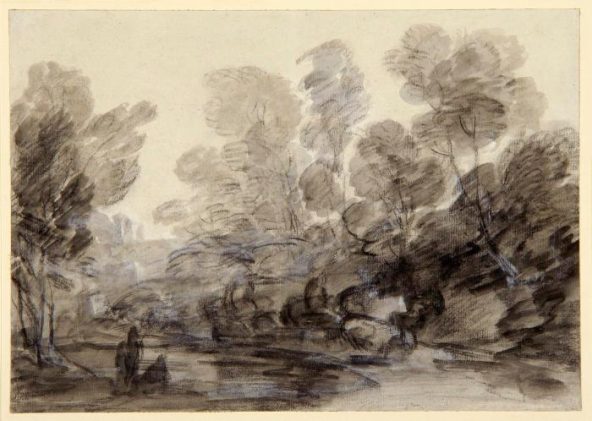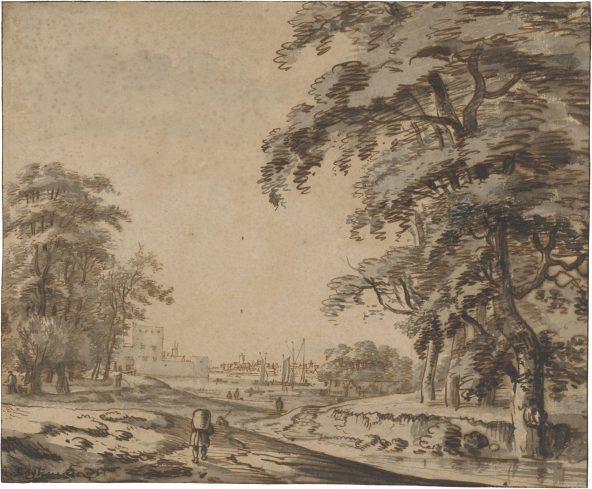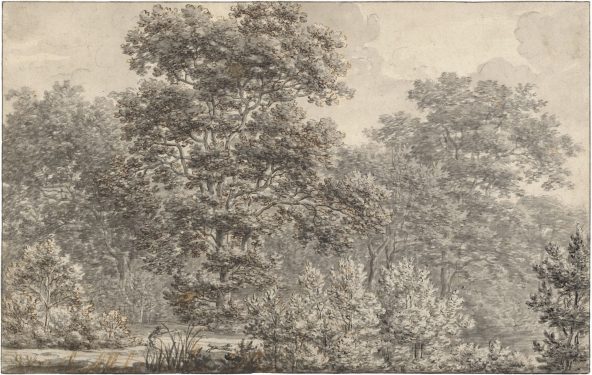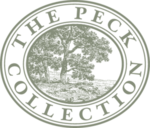Article: Thomas Gainsborough and the Dutch Landscape Tradition
Focus on the Peck Feature
Thomas Gainsborough (1727-1788) is best known as one of England’s most successful eighteenth-century portrait painters, but like many of his fellow English artists, he was inspired by seventeenth-century Dutch landscapes. This Focus on the Peck Collection installation places Gainsborough’s Wooded Landscape with Herdsmen and Cattle of around 1780 together with two Dutch landscape drawings by Roelant Roghman and Joris van der Haagen from the Peck Collection, presenting an opportunity to compare the ways in which the English artist adapted earlier Netherlandish themes, motifs, and technique to suit his own drawing style.
In eighteenth-century England, Dutch artists of the previous century were celebrated for their expertise at imitating the natural world. Picturesque sand dunes, wooded hills, riverbeds, and the uncultivated terrain of the rural countryside, whether real or imagined, stimulated new interest in landscapes among British artists and their collectors.
Thomas Gainsborough (1727-1788) is best known as one of England’s most successful eighteenth-century portrait painters, but like many of his fellow English artists, he was inspired by seventeenth-century Dutch landscapes. He became passionate about drawing and found lifelong pleasure in depicting the British countryside, fondly recalling his earliest attempts of the subject as his “first imitations of little Dutch Landskips.”
This Focus on the Peck Collection installation places Gainsborough’s late Wooded Landscape with Herdsmen and Cattle of around 1780 together with two Dutch landscape drawings from the Peck Collection, presenting an opportunity to compare the ways in which the English artist adapted earlier Netherlandish themes, motifs, and technique to suit his own drawing style.
Notice the overall structure of Gainsborough’s drawing as well as the elements he included. How does his treatment of space compare with Roelant Roghman’s drawing of a single traveler walking along a winding river or Joris van der Haagen’s depiction of the rustic forest of Haagse Bos, which he enlivened with a hunter and his dog? How does each artist treat the trees, figures, light, and atmosphere? What northern European aspects does Gainsborough borrow and which are his own?
Wooded Landscape with Herdsmen and Cattle

Thomas Gainsborough, British, 1727 – 1788, Wooded Landscape with Herdsmen and Cattle, ca. 1780s, black, brown, and white chalk with gray wash. The William A. Whitaker Foundation Art Fund, 2008.4
See Wooded Landscape with Herdsmen and Cattle in more detail here.
Thomas Gainsborough created Wooded Landscape with Herdsmen and Cattle at the height of his career. Throughout his life, the artist sketched directly from nature, but during busy times was known to have constructed small models in his home. He fashioned broccoli for trees, bits of cork or coal for stones, fragments of mirrors for water, and whatever else was to hand to create variations in his landscape drawings and paintings. This late work, which may be a mixture of actual and imagined views, shows the artist’s technique of smudging some areas of white chalk with his fingers or a sponge to achieve a hazy, atmospheric effect.
High Trees by a River with a Town in the Distance

Roelant Roghman, Dutch, baptized 1627 – 1692, High Trees by a River with a Town in the Distance, c. 1650-55, pen and ink with brown and gray washes. The Peck Collection, 2017.1.71
See High Trees by a River with a Town in the Distance in more detail here.
Roelant Roghman is widely known for his topographically accurate views of Netherlandish castles and residences. His landscape drawings of forest views and pastoral river scenes, like the work displayed here, exhibit a mixture of exactitude and creativity. Here, Roghman emphasizes a lone traveler in the central foreground and uses a variety of pen strokes and selective washes to lead the viewer’s eye through a zigzag composition of alternating tree clusters that culminates in a distant, precisely rendered townscape.
View in the Hague Woods (“Haagse Bos”)

Joris van der Haagen, Dutch, ca. 1615 – 1669, View in the Hague Woods (“Haagse Bos”), c. 1660, black chalk, pen and ink with gray wash. The Peck Collection, 2017.1.42
See Woods at View in the Hague Woods (“Haagse Bos”) in more detail here.
Joris van der Haagen specialized in forest scenes, panoramic landscapes, and topographical views. He spent much of his career in The Hague depicting the Haagse Bos, a broad and stately forest located near the city, parts of which still survive today. Using multiple stylistic techniques, Van der Haagen emphasizes the towering beauty of the trees and their foliage, their large scale accentuated by the small hunter and his dog visible through the tall grasses in the foreground (lower left).
